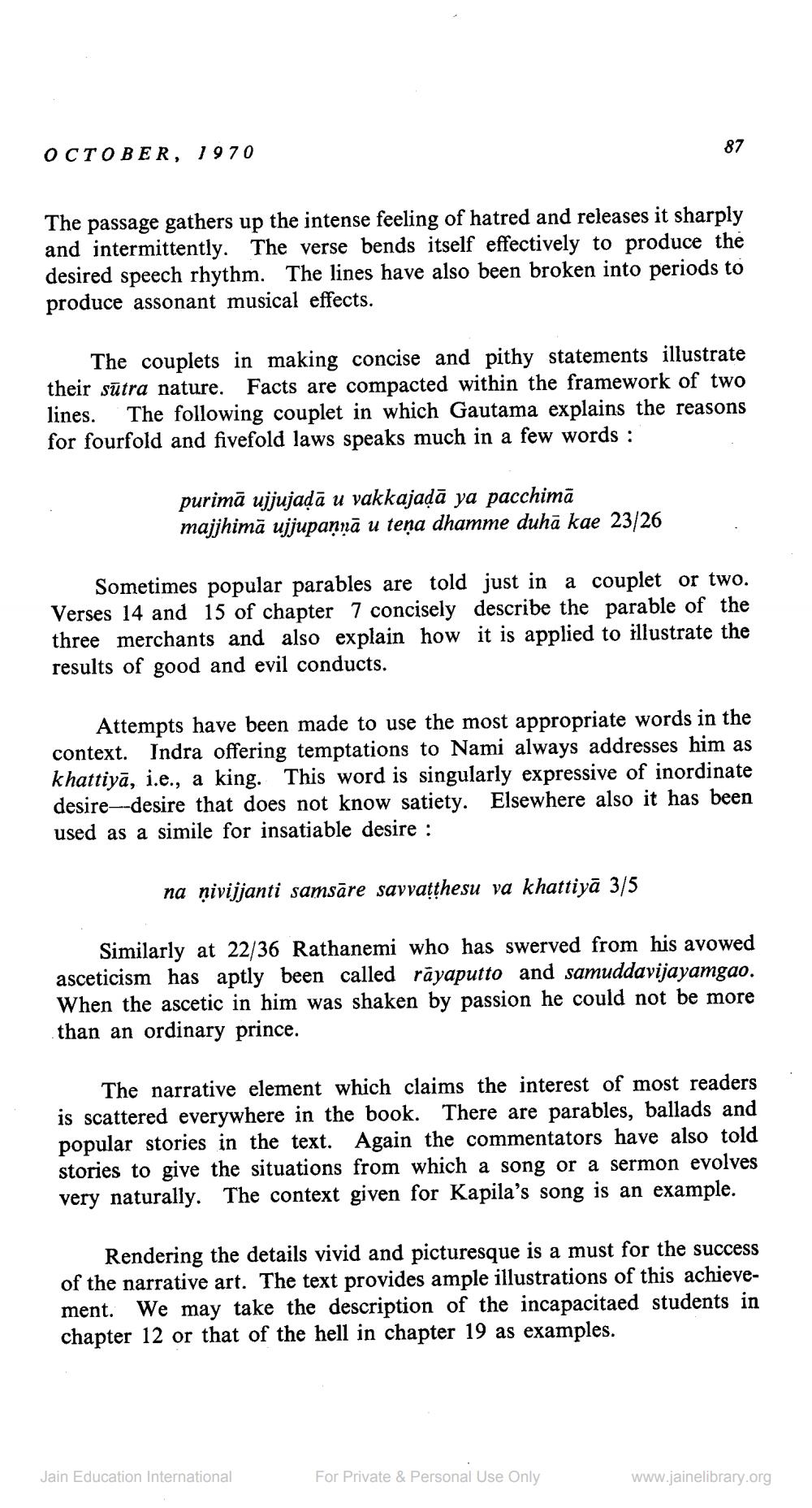________________
OCTOBER, 1970
The passage gathers up the intense feeling of hatred and releases it sharply and intermittently. The verse bends itself effectively to produce the desired speech rhythm. The lines have also been broken into periods to produce assonant musical effects.
The couplets in making concise and pithy statements illustrate their sūtra nature. Facts are compacted within the framework of two lines. The following couplet in which Gautama explains the reasons for fourfold and fivefold laws speaks much in a few words :
purimā ujjujadā u vakkajadā ya pacchimā majjhimā ujjupannā u tena dhamme duhā kae 23/26
Sometimes popular parables are told just in a couplet or two. Verses 14 and 15 of chapter 7 concisely describe the parable of the three merchants and also explain how it is applied to illustrate the results of good and evil conducts.
Attempts have been made to use the most appropriate words in the context. Indra offering temptations to Nami always addresses him as khattiyā, i.e., a king. This word is singularly expressive of inordinate desire--desire that does not know satiety. Elsewhere also it has been used as a simile for insatiable desire :
na ņivijjanti samsāre savvatthesu va khattiyā 3/5
Similarly at 22/36 Rathanemi who has swerved from his avowed asceticism has aptly been called rāyaputto and samuddavijayamgao. When the ascetic in him was shaken by passion he could not be more than an ordinary prince.
The narrative element which claims the interest of most readers is scattered everywhere in the book. There are parables, ballads and popular stories in the text. Again the commentators have also told stories to give the situations from which a song or a sermon evolves very naturally. The context given for Kapila's song is an example.
Rendering the details vivid and picturesque is a must for the success of the narrative art. The text provides ample illustrations of this achievement. We may take the description of the incapacitaed students in chapter 12 or that of the hell in chapter 19 as examples.
Jain Education International
For Private & Personal Use Only
www.jainelibrary.org




